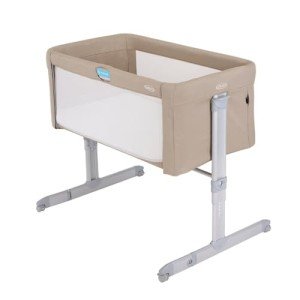The Benefits and Considerations of Bedside Cots for Co-Sleeping
Co-sleeping has actually emerged as a popular option for numerous new parents who look for to preserve close distance to their infants throughout the night. Together with standard co-sleeping practices, bedside cots are gaining traction as an option that offers both the comfort of closeness and the safety of separate sleeping spaces. This short article intends to explore the principle of bedside cots for co-sleeping, highlighting their benefits, potential drawbacks, pointers for choice, and common issues.
Comprehending Bedside Cots
Bedside cots, likewise known as side-sleepers or co-sleepers, are specifically created cribs that are affixed to the side of the parents' bed. They enable parents to maintain easy access to their infants in the evening while supplying a separate sleeping area that can enhance safety and comfort.
Features of Bedside Cots
- Size and Design: Bedside cots are frequently smaller sized than standard cribs however still offer ample room for an infant. Most models have adjustable heights to match the bed.
- Side Panels: Many designs feature detachable or mesh side panels that permit safe visual tracking of the baby, boosting parents' ability to respond to their baby's requirements rapidly.
- Stability and Safety: Bedside cots are developed with stability in mind, including safety anchors or straps that secure the cot to the moms and dad's bed.
- Ease of Access: Parents can quickly reach over to comfort or feed their baby without needing to rise, facilitating nighttime breastfeeding or calming.
Benefits of Using Bedside Cots for Co-Sleeping
- Boosted Bonding: Proximity to the baby fosters psychological connection and bonding, which is important during the early phases of advancement.
- Easier Nighttime Care: Nighttime feeding and reassuring become significantly much easier with a bedside cot, as parents can just lean over to address their baby's requirements.
- Increased Safety: Bedside cots reduce the threat of suffocation or unintentional rolls that can accompany traditional co-sleeping directly in the adult bed.
- Specific Sleep Space: The documents supports that having their own sleeping space can assist infants sleep better in terms of less disturbances from parents.
- Transitioning: A bedside cot can be a valuable transitional tool as babies grow and begin to relocate to their own spaces.
| Feature | Advantages |
|---|---|
| Enhanced Bonding | Closer physical existence |
| Easier Access | Quick response to requirements |
| Increased Safety | Lowered risk of mishaps |
| Individual Space | Less disturbance in the evening |
| Streamlined Transition | Easier transfer to independent sleeping |
Factors to consider Before Choosing a Bedside Cot
While bedside cots offer many advantages, prospective users need to think about the following factors:
- Size of Bed: Ensure that the cot fits nearby to the bed without causing pain or overcrowding.
- Spending plan: Prices can differ considerably amongst various brand names and models, so think about spending plan restraints thoroughly.
- Security Standards: Check that the cot fulfills all security policies to guarantee it is devoid of dangerous materials and includes required security features.
- Material: Non-toxic surfaces and products are crucially essential for infant health.
- Infant's Age and Weight: Some cots have weight limitations, and parents must pick accordingly based upon their baby's development.
Tips for Selecting a Bedside Cot
- Read Reviews: Look for user feedback and security ratings.
- Look for Certifications: Ensure the cot abides by safety standards.
- Inspect the Design: Choose a design that complements your bedroom design while making sure functionality.
- Think about Accessibility: Look for designs that permit easy reach but minimize the danger of rolling out.
- Test Stability: Ensure that the cot is stable and safe when connected to the bed.
Common FAQs About Bedside Cots for Co-Sleeping
Q1: Are bedside cots safe for co-sleeping?
A1: When used properly, bedside cots are designed to offer a safe sleeping option for infants while allowing close distance to parents. Constantly make sure to protect the cot correctly to prevent movements that could lead to accidents.
Q2: At what age can I begin using a bedside cot?A2: Many parents begin using bedside cots right after the baby is born. However, it is vital to talk to a doctor regarding your infant's readiness for co-sleeping, particularly if they were born prematurely. Q3: Can I use a routine
crib for co-sleeping? A3: While regular cribs can be utilized, they do not supply the exact same level of availability and safety as bedside cots, making bedside alternatives more beneficial for co-sleeping. Q4: What if my baby rolls over?A4: Most bedside cots are developed with security features that lessen dangers if a baby rolls. In addition,
they are typically low enough that a roll would not lead to a substantial drop. Q5: How do I transition my baby from a bedside cot to a regular crib?A5: Gradually move your baby to a different crib in their own room after they end up being accustomed to oversleeping the bedside cot. Start with naps in the crib while keeping nighttime co-sleeping until they adapt. Bedside Cot For Comfortable Sleep provide a useful and more secure alternative to direct co-sleeping, offering many benefits in regards to convenience and security. They help with bonding
in between infants and parents while minimizing the threats connected with conventional co-sleeping practices. Parents looking for a method to keep their babies close at night ought to think about the advantages that bedside cots can provide. With a mindful assessment of options readily available, parents can produce a safe and comfortable sleep environment that supports their family's special requirements.

